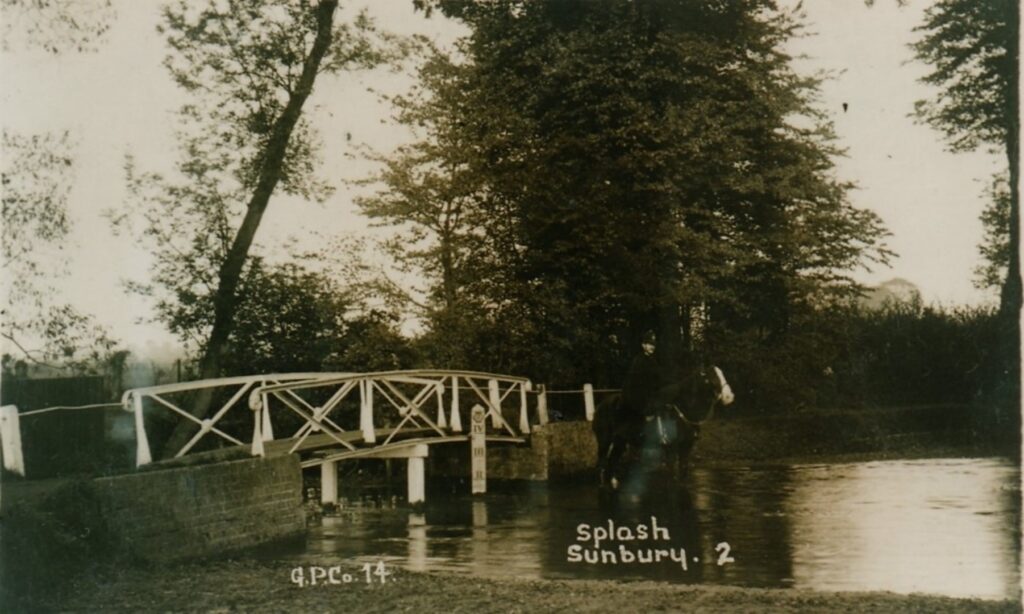By Nick Pollard
This postcard shows the watersplash at Sunbury, in the years before World War One. You may well be asking yourself where there is a watersplash in Sunbury, but the clue is in the name of Ford-bridge Road, which leads from Sunbury village towards Walton Bridge and Shepperton. The original name for the road was Watersplash Road, which was changed after a bridge was built over the ford across the River Ash, the border between Sunbury and Shepperton, in the 1920s. As at the two remaining water-splashes on the Ash in Shepperton, a narrow bridge was provided at one side for the use of pedestrians or cyclists, but all other traffic had to use the ford. In the photo, a mounted po-liceman pauses, possibly for his horse to have a drink. The local mounted patrol of T Divi-sion of the Metropolitan Police was based at Hampton at the time. An interesting feature is the tall white post next to the bridge, in the middle of the picture. Closer inspection of the original reveals that this was a depth marker to show how much water was in the ford, pro-vided by the Automobile Association for the benefit of motorists. The AA had been formed in 1905 to aid early car drivers, and began erecting warning signs such as this in 1909, as local authorities didn’t see it as their responsi-bility.
The River Ash itself is only 6 miles or so long, and traces out its entire course within the Borough of Spelthorne. It originates from the River Colne at the southern end of Staines Moor, where these days it is controlled by a sluice gate, and then flows south east under the Crooked Billet roundabout, through Ash-ford (to which it gives its name), then Lale-ham and Littleton, through the public park by Shepperton Studios, and skirts the golf course at Charlton before passing under Gaston Bridge at Halliford to reach Sunbury. It flows into the Thames at the Creek, behind Wheat-ley’s Ait. It is a shallow river, hence the num-ber of watersplashes/fords which originally crossed it, for example in Watersplash Road and Old Charlton Road in Shepperton. De-spite its small size, in ancient times it seems to have had great significance. ‘Henges’, i.e. large circular ditches with enclosing earth banks, assumed to have had a ritual use, were built in loops of the river at Shepperton Green and Ashford during the Neolithic (New Stone Age) period, circa 3500BC.
The Sunbury and Shepperton Local History Society will have displays at Sunbury Christ-mas Market in the Avenue on Thursday 7th December from 5-8pm, and in the Village Hall at Big Tree Night in Shepperton High Street, on Wednesday 13th December between 5-8.30pm.

